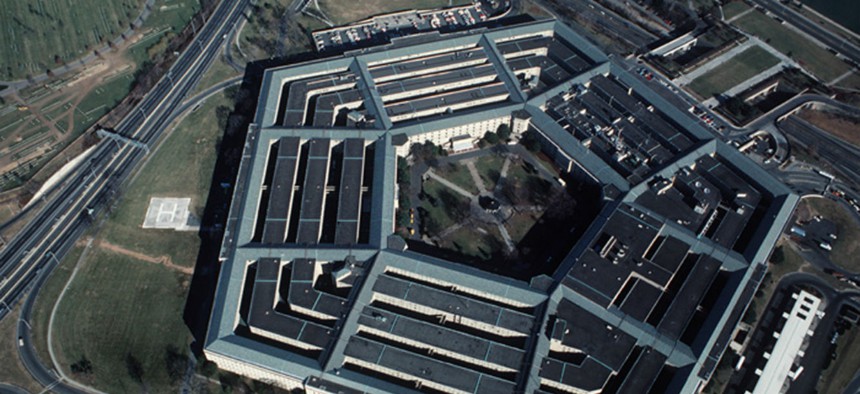Pentagon Advised to Keep Better Tabs on Defense Industry Before Reforming Payments
Impact of performance pay and contractor borrowing hasn’t been studied for 30 years.
Defense Department contract managers need to formally update their data on contractor financing and eligibility for performance pay before modernizing policy, the Government Accountability Office said.
“DoD officials acknowledged that DoD has not comprehensively analyzed how its policies affect the defense industry since 1985,” said the June 27 report sent to leaders of Congress’s Appropriations and Armed Services panels. “Industry and economic conditions, however, have since changed, including lower interest rates and the emergence of contractors who do not typically work with DoD.”
Contractor representatives, who worked with GAO auditors on the study, applauded its conclusions, which followed the Pentagon’s withdrawal of a proposed rule floated in August 2018 that would have changed the calculation of incentive payments for contractor performance—on the grounds that it didn’t address contractor profitability.
The legislative and regulatory framework for contractor financing has been reevaluated and altered in recent years with insufficient consideration of the impact on companies in the market, the report said. Changes were aimed at encouraging performance-based payments to contractors and reducing Defense administrative costs, a cited example being the cancellation of a requirement that contracting officers justify a need for contract financing and establish a preference for performance-based payments.
“Without assessing the collective impact of these changes, DoD may be assuming too much financial risk or providing contractors with levels of working capital that are not commensurate with what is needed to help finance long-term projects, and affecting its ability to attract new entrants into the defense market,” GAO said.
Numbers from the Defense Contract Management Agency show that the amount of performance-based payments it administered fell by nearly $20 billion from 2010 to 2016, while the amounts in progress payments (based on the companies’ incurred costs) rose.
Because its study was out of date, “DoD’s supporting analysis did not include an assessment of how the proposed rule would impact the overall profitability of defense contractors (such as assessing the impacts to a contractor’s internal rate of return) or of the profitability of defense work relative to non-defense industry opportunities,” GAO said. “Rather, DoD’s analysis estimated the total financial impact the rule would have on large and small contractors primarily based on interest costs.”
Not only should the Pentagon conduct a new industry study, GAO said, it should be repeated on a regular basis. Otherwise, it will not be “in a position to understand whether current or future contract financing policies are achieving their intended objectives,” auditors said.
Defense agreed on the need for a new “comprehensive assessment” of contact financing and the impact of Defense rules on the industry, wrote Kim Herrington, acting principal director of Defense Pricing and Contracting.
In hailing the study and abandonment of last August’s proposal, Alan Chvotkin, executive vice president and counsel at the Professional Services Council, said on Friday that GAO “validates” the contractors’ position that DoD lacked sufficient data to make “radical changes,” as he called them.
“This comprehensive assessment should not just be an update to the old data,” Chvotkin said. “With the significant changes taking place in the defense market—driven in part by DoD’s own actions—any assessment must take into account the likely characteristics of the defense marketplace over the next decade before proposing any changes to DoD’s contract finance policies.”




